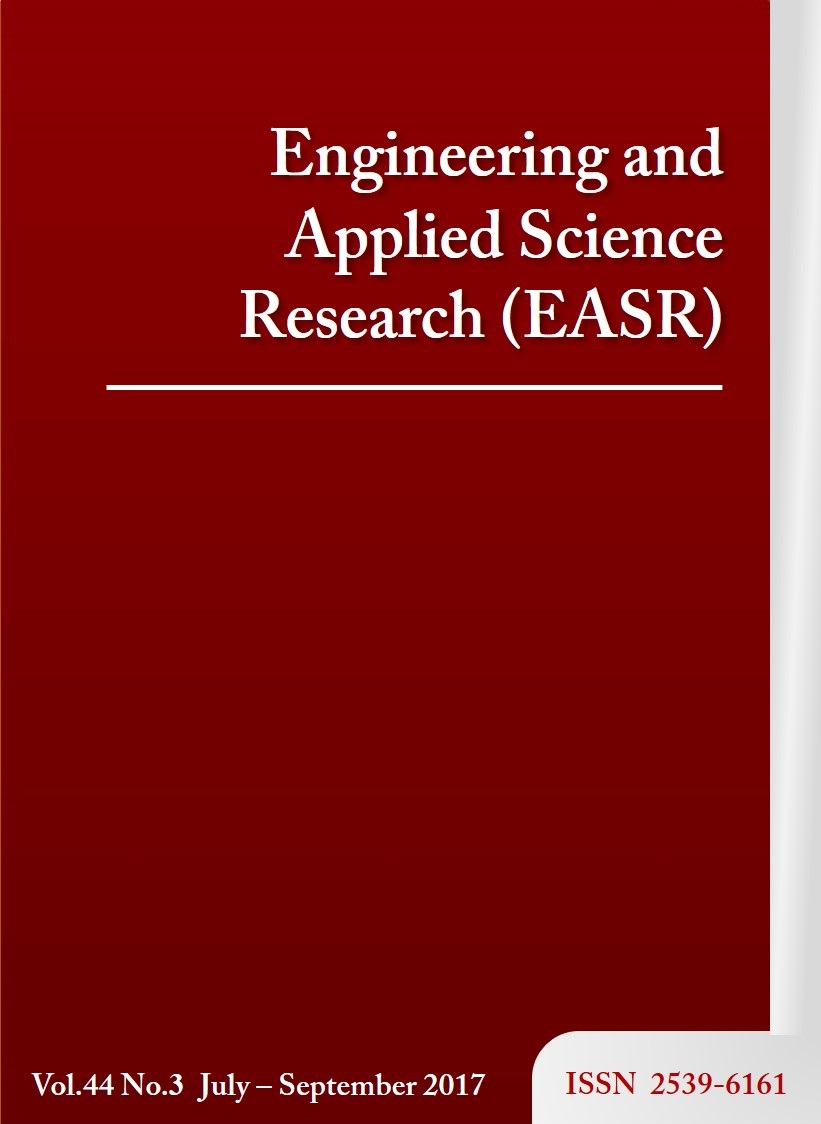Sizing of a small irrigation weir
Main Article Content
Abstract
This paper presents the determination of weir dimensions and its applications based on the equations derived specifically for an irrigation weir and introduced in the standard design manual entitled “KKU-2527 Weir”. The manual was used nationwide as a guideline for the construction of weirs. However, due to technical constraints that probably have a significant impact on weir design such as on-site conditions and budget constraints, among others, the main objective of this study is to determine the weir dimensions that best captures the hydraulic characteristics of flow over a weir and remedy the aforementioned technical constraints. According to the numerical solution of related equations in this study, it was found that weir dimensions are interchangeable. For example, with the significant limitations in deepening a river channel, a higher stilling basin floor elevation can be compensated by increasing the weir width. In brief, such design flexibility can be very useful for on-site weir design modifications in dealing with construction problems and dealing with the financial constraints of local administrative organizations.
Article Details
This work is licensed under a Creative Commons Attribution-NonCommercial-NoDerivatives 4.0 International License.
References
Wijitkosum S, Sriburi T. Impact of urban expansion on water demand: the case study of Nakhonrachasima city, Lam Ta Kong Watershed. Nakhara: J Environ Des and Plann. 2008;4:69-88.
Bruns B. Design for participation: elephant ears, crocodile teeth and variable crest weirs in Northeast Thailand. IWMI Books, Reports. Colombo, Sri Lanka: International Water Management Institute; 1990. Report No: H007280.
Department of Provincial Administration and Water Resources and Environment Institute. The people’s volunteer weir project for the development of small scale water resources. Thailand: Khon Kaen University; 1987.
Sri-Amporn W, Udomsuwan T, Tamnamuang T, Unsiam W. Development of a computer program KKU-WEIR 3.0 for KKU-2527 Weir design. KKU Eng J. 2007;34(5):647-57. [In Thai].
Ghare AD, Wadhai PJ, Mistry NJ, Porey PD. Hydraulic and environmental aspects of long crested weirs. Global J Environ Res. 2008;2(3):122-5.
Water Resources and Environment Institute and Department of Provincial Administration. KKU-2527 Weir construction manual. Thai-NZ small watershed development project report. Khon Kaen, Thailand: Khon Kaen University; 1984. [In Thai].
Water Resources and Environment Institute.
Manual of weir construction. The KKU-NZ weir project report. Khon Kaen, Thailand: Khon Kaen University; 1986. [In Thai].
Water Resources and Environment Institute.
Manual of small weir design. Thai-NZ small watershed development project report. Khon Kaen, Thailand: Khon Kaen University; 1991. [In Thai].
Henderson FM. Open channel flow. New York: Macmillan Publishing; 1966.
Rehbock T. Discussion of precise weir measurements by EW Schoder and KB Turner. Trans ASCE. 1929;93:1143-62.



